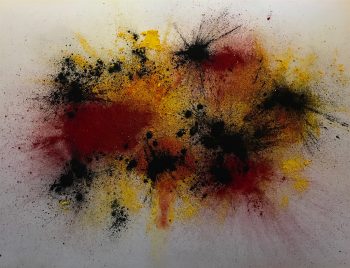
Lost in the Photosphere, one of the sketches created by the artist during the second part of her residency in ESTEC. Credit: A. van Linden Tol.
Aoife van Linden Tol, the recipient of the first art&science@ESA residency, spent her second research period at ESA’s European Space Research and Technology Centre (ESTEC) from 1 to 19 May 2017. The residency is organised by Ars Electronica in partnership with ESA.
As a result of the input received during her first stay at ESTEC, Aoife came back with sketches and a preliminary plan for her Star Storm project, an explosive performance inspired by stellar processes in the Universe. The show will be premiered in September during the Ars Electronica Festival in Linz, Austria.
To further develop the overall story arc of the performance as well as fine tuning the details of the various explosions it will include, the artist organised a series of brainstorming sessions with ESTEC scientists over the past three weeks. During these conversations, she presented individual aspects of the performance and invited the scientists to discuss the relevant physical processes and how to best represent them using a variety of explosive media including fireworks, fuse wire, pyrotechnic jets, and smoke bombs.
“I was a little nervous to open up my creative process which is usually a very private and delicate process. However, I felt that the input of the scientists at this stage would not only be incredibly useful in detailing the performances but I wanted them to feel a sense of ownership and engagement with the project beyond simply sharing information and data with me,” says Aoife.
“I also wanted to gauge the human instinctive reaction to the ideas and so I created a fairly fast-paced brainstorm in which I would explain one of the current ideas in detail and ask them to simply say anything that came to mind, off the top of their heads, even if not obviously related to the visual or conceptual idea.
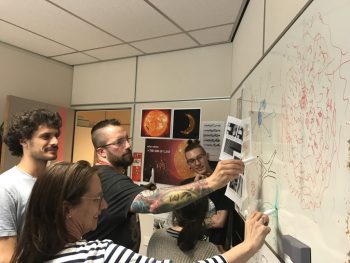
One of the brainstorm sessions in Aoife’s office at ESTEC, with participants drawing their favourite cosmic explosion on the board. From left to right: Jacopo Chevallard (ESA research fellow), Jolanda Preusterink (space educator from Copernicus Sterrewacht), Matt Taylor (ESA Rosetta project scientist), Claudia Mignone (ESA science writer), Jack Carlyle (ESA research fellow). Credit: A. van Linden Tol.
“I asked key questions such as ‘How did the idea make you feel or how did you think you would feel if you were there experiencing it?’, ‘What science or phenomena did the idea make you think of?’ or ‘How could I enhance the link between the scientific data of the phenomena which inspired the work?’
“I did not know if this process would work but it ended up being a dynamic, exciting, and informative interaction, with everyone drawing and writing ideas, links, and stories. It also allowed the scientists to come together for a shared goal and to share knowledge with each other, whereas usually they work on their own highly specialised area of research or missions and so might not always know much about each other’s field of science.”
In the spirit of a two-way exchange during this residency, the artist also offered scientists and other ESTEC employees a peek into her creative practice.
In a workshop that was held on 12 May, Aoife invited scientists to bring printed materials that, to them, represent the concept of ‘making a mark’ on the history of space science and exploration. These could be one or more images, science papers, letters, laws or treaties, diagrams or other documents, including poems and literary texts.
“I asked them to think of something they feel was important, either historically to the progress of science and humankind, or personally in their career or research path,” Aoife explains.
“Something that inspired them, a big discovery, something that really changed the way people think, a great failure, someone they admire or hate, something that serves as a warning, a way of thinking about the cosmos which expanded our understanding, something that broke walls or boundaries.”
Among the participants were several ESTEC scientists and science communicators, as well as four external guests with different backgrounds, who were invited to complement the topics of expertise in the group.
Participants brought a spread of interesting documents, from astronomical images to scientific papers that were pivotal in the history of physics, astronomy, and cosmology; from roadmaps for past and future endeavours in space science and exploration to the photograph of a renowned psychologist and even the writings of a nineteenth century magician.
During the workshop, the artist led the participants through a series of exercises to analyse the reason why they chose to share a particular document and to formulate an intention that they would set for themselves based on their relationship with such document. There was also the chance to get one’s hands dirty, by collaborating on a series of drawings using charcoal powder – a medium that Aoife uses to prepare sketches for her explosive performances.
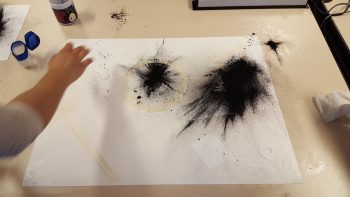 |
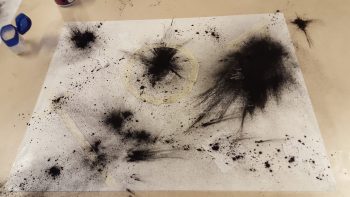 |
| Workshop participants creating drawings with charcoal powder. Images courtesy Janine Pforr. | |
|---|---|
In the final part of the workshop, the participants – split in four groups – collaborated on creating an artwork by assembling the various documents they had brought, taking creative decisions based on the reasons why each document was relevant to them.
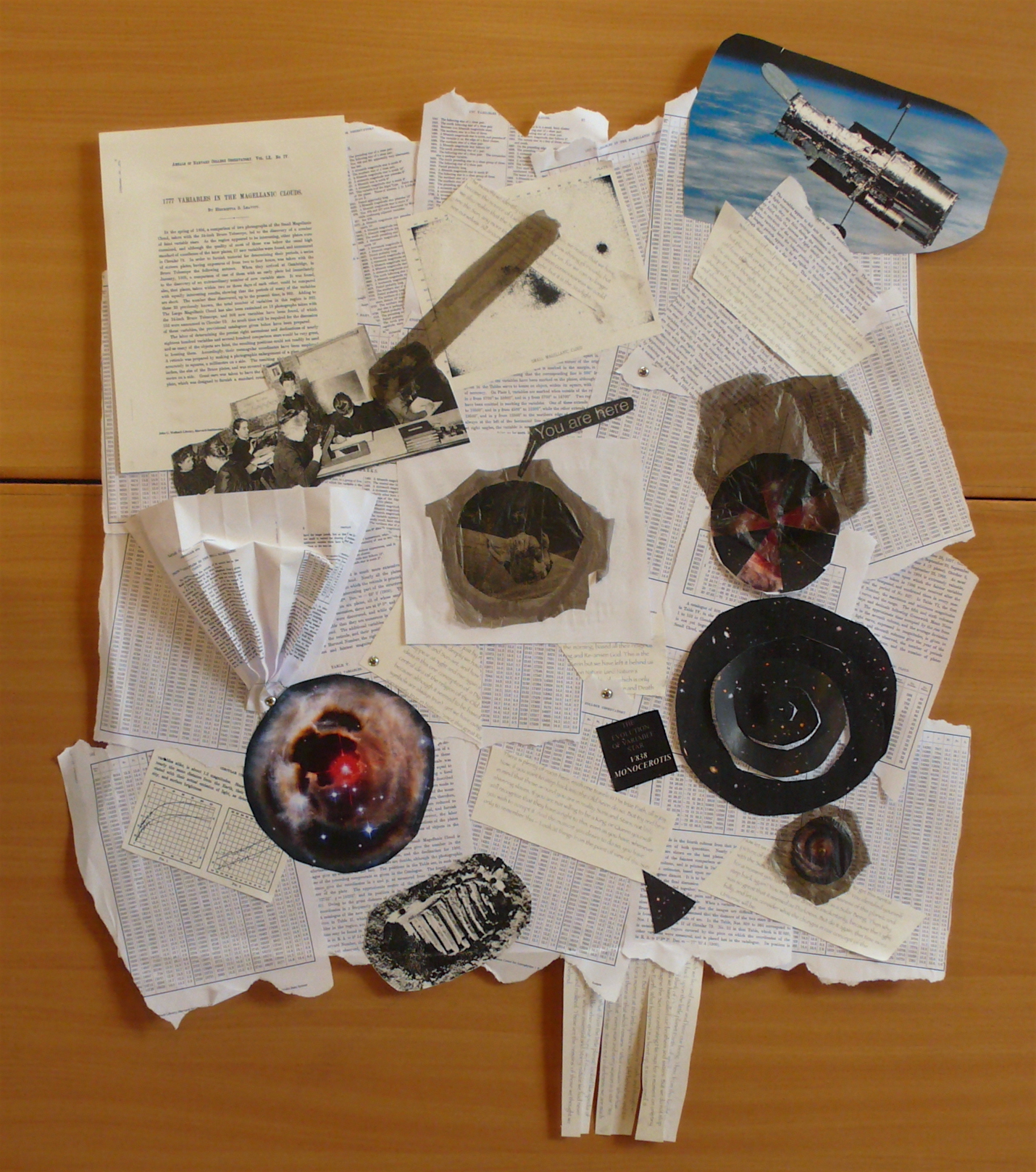 |
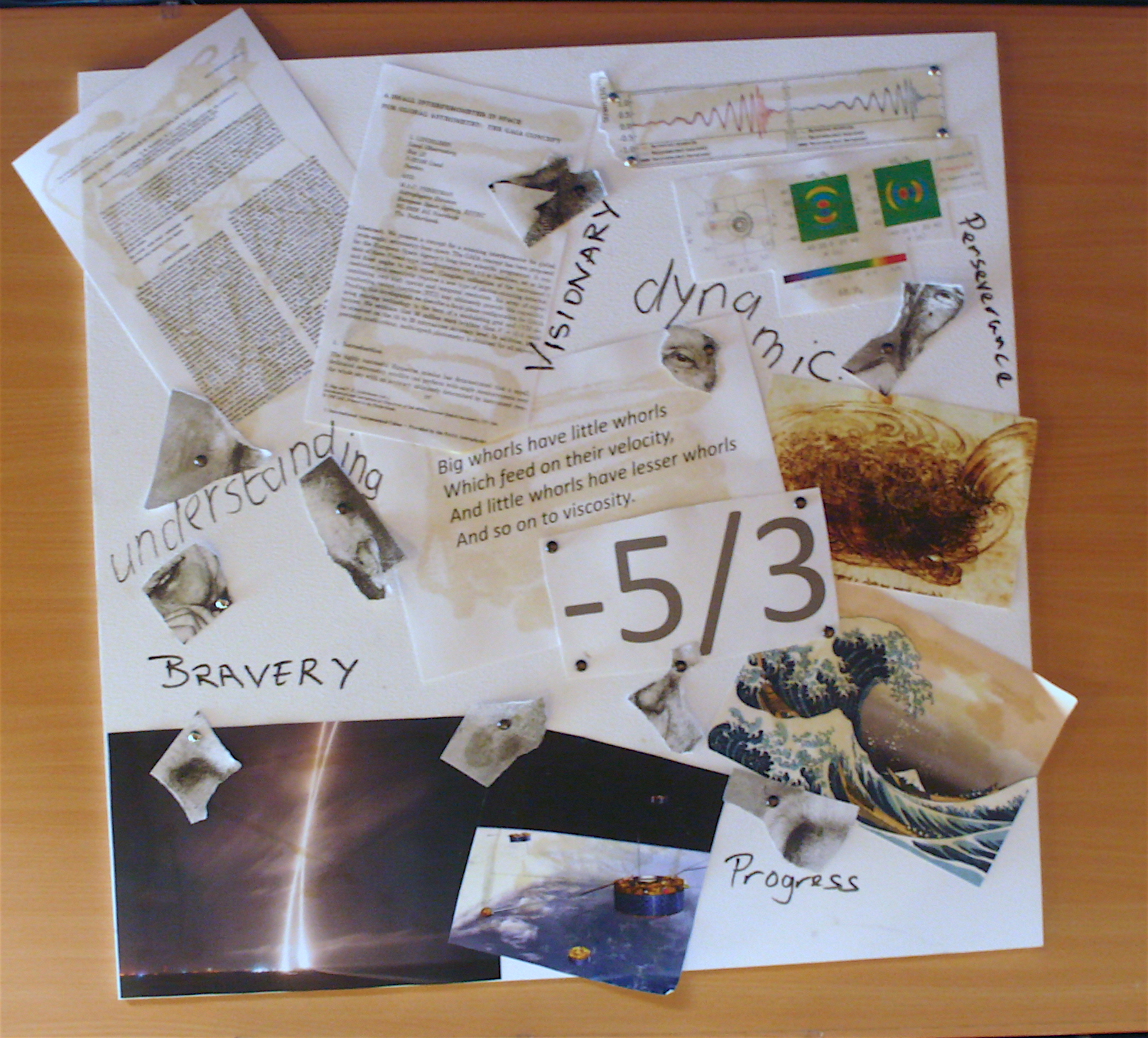 |
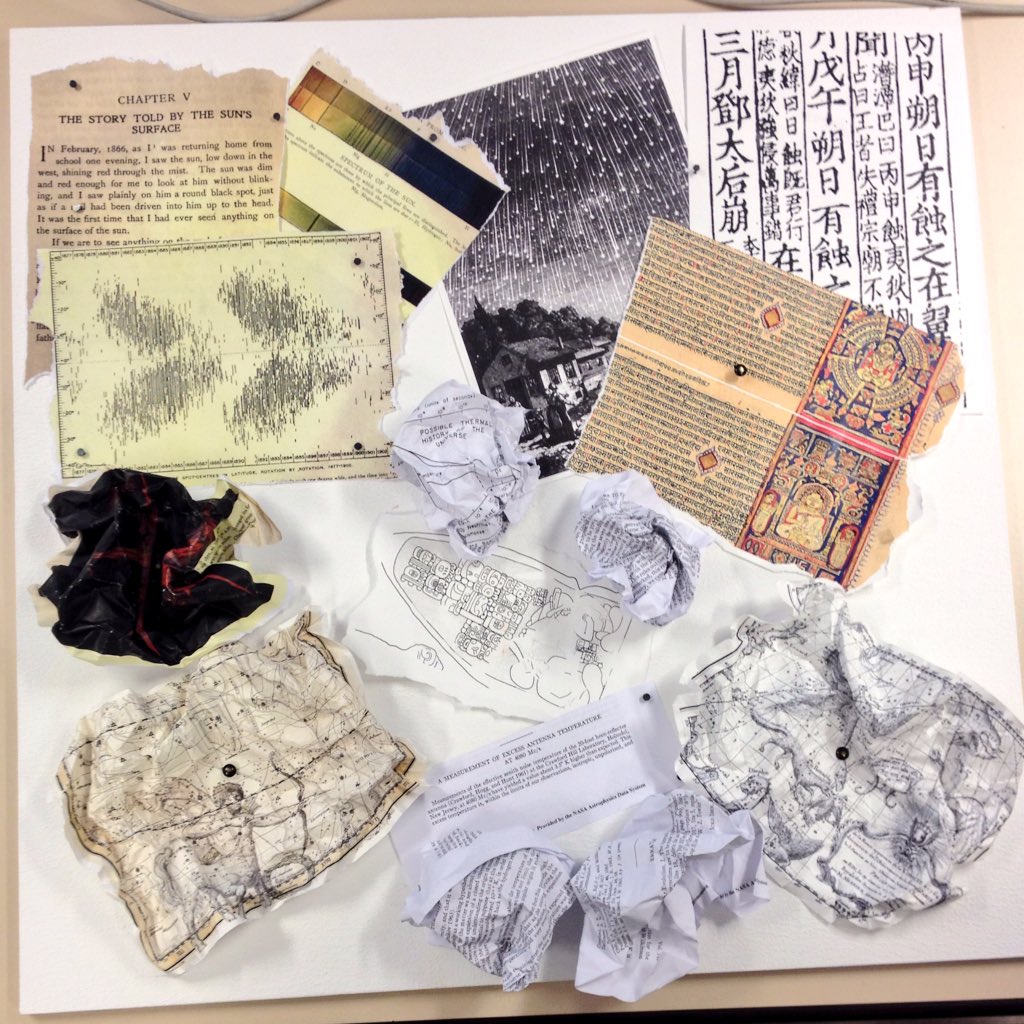 |
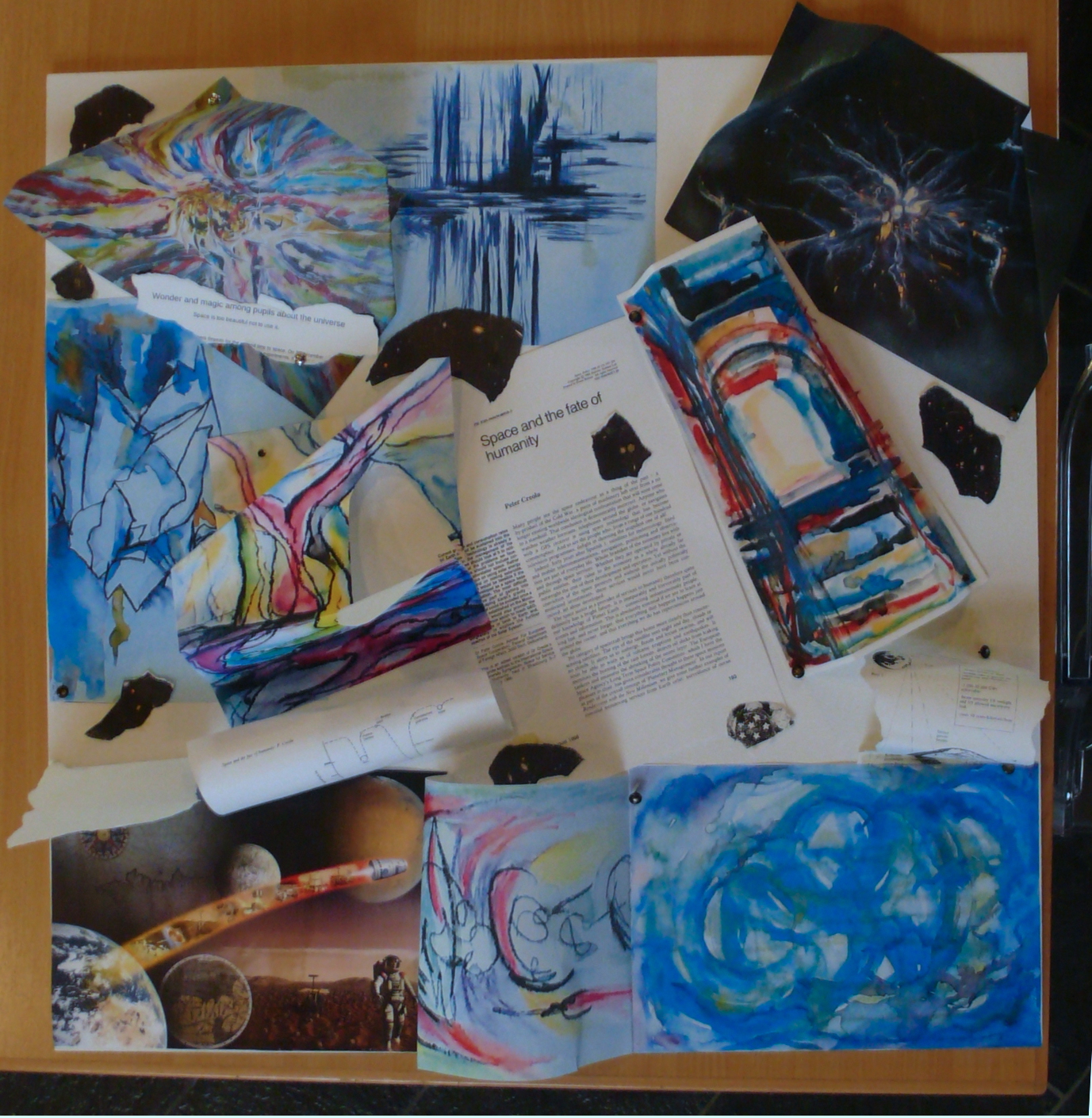 |
| The four panels created by the workshop participants. Credit: ESA, CC BY-SA 3.0 IGO. | |
|---|---|
But the work was not over! On 16 May, during a live-art event organised in one of the open spaces at ESTEC, the artist invited the workshop participants to ‘make their mark’ on these panels by impacting them with lemon juice ‘bombs’.
Eventually, the marks left by the (barely visible) juice were blasted with a heat gun, revealing the patterns of the impacts. This process was also a metaphor for the idea that the full impact of scientific discoveries often reveals itself over many years and in ways that cannot be predicted by the initial intention of the original author.
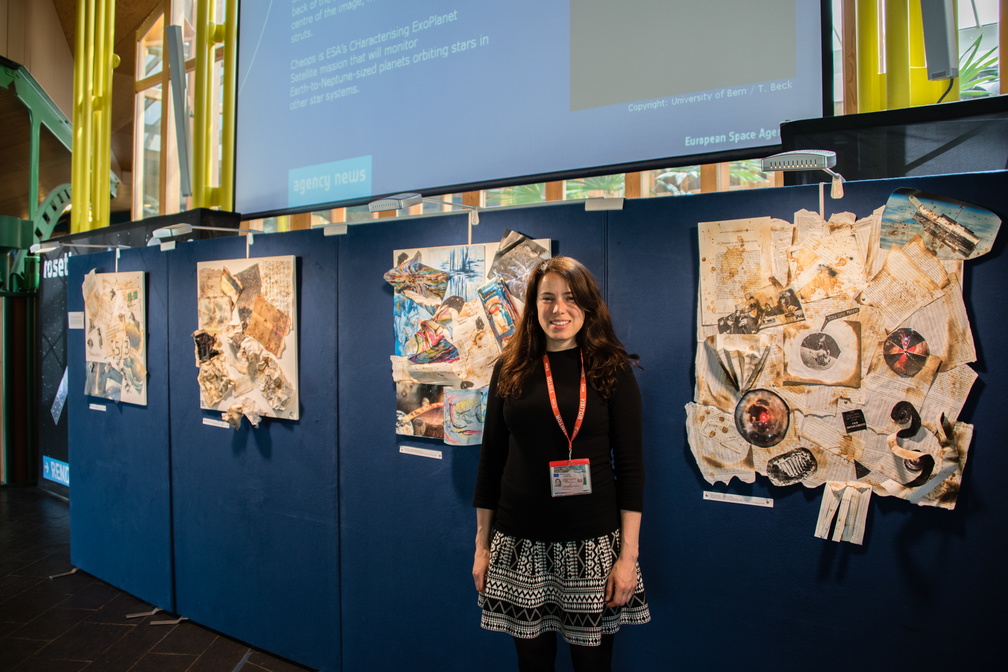
Aoife with the four panels created during the workshop, after the participants had impacted them with lemon juice and revealed the impacts using a heat gun. These collaborative works were exhibited in the Wintergarden area of ESTEC on 18–19 May. Credit: ESA/C. Carreau, CC BY-SA 3.0 IGO.
Aoife also created a large panel composed of articles from the Universal Declaration of Human Rights, as well as a series of limited-edition prints composed of pages from the United Nations Treaties and Principles on Outer Space (also known as Outer Space Treaty).
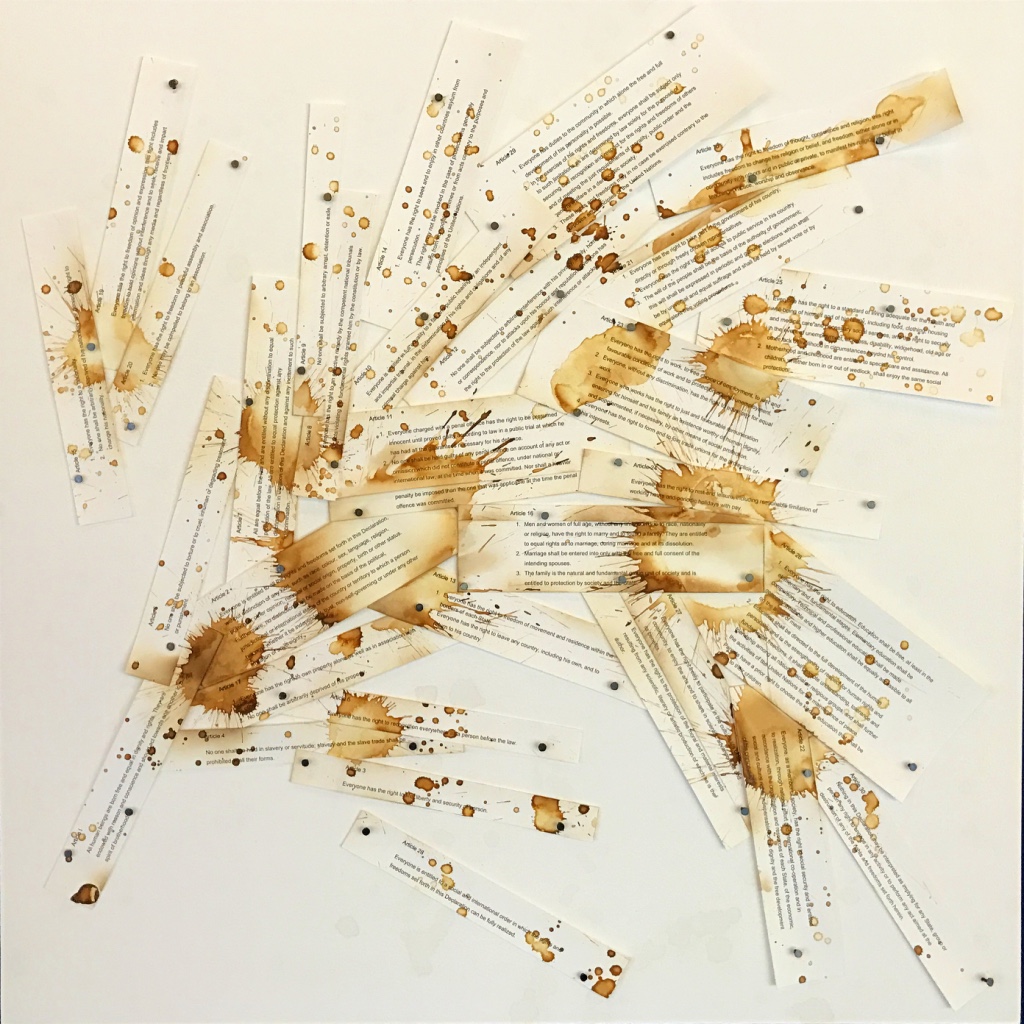 |
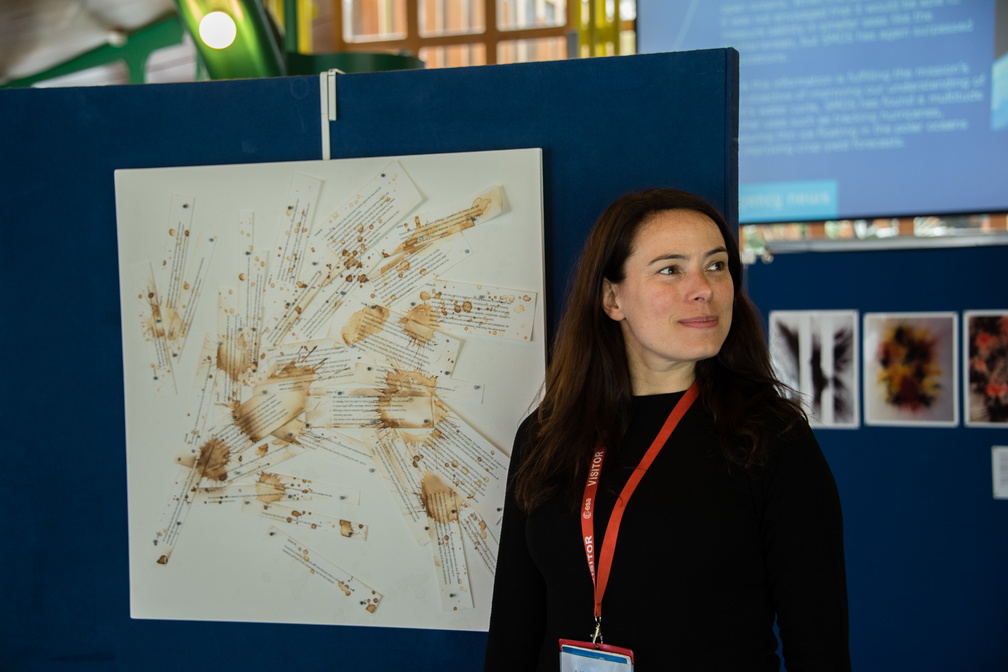 |
| Left: Aoife’s Declaration (Paper, nails, lemon juice, heat), based on articles from the Universal Declaration of Human Rights. Credit: A. van Linden Tol. Right: Aoife with the artwork in ESTEC. Credit: ESA/C. Carreau, CC BY-SA 3.0 IGO. | |
|---|---|
“For the prints, I used the first page of each section of the Outer Space Treaty, which sets the intention behind the individual principles which follow, and composed them in a form that resembles the composite patchwork imagery of the surface of outer space bodies,” says Aoife.
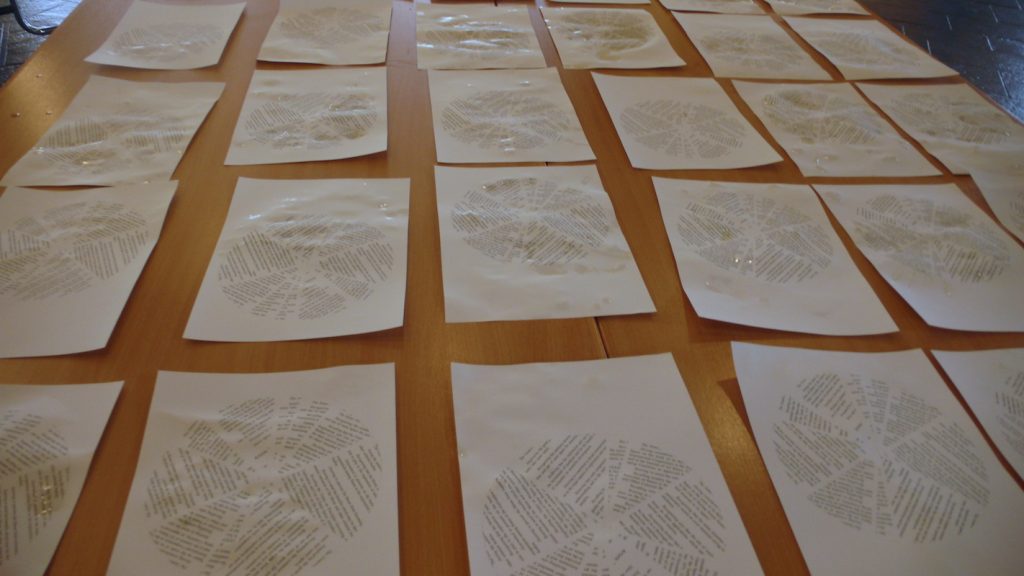
Waiting for the lemon juice marks on the collaborative artworks to dry. Credit: ESA, CC BY-SA 3.0 IGO.
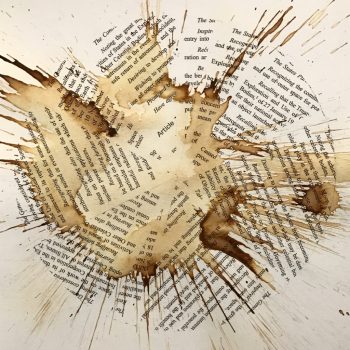
Detail of Impact (Paper, ink, lemon juice, heat), created using text from the Outer Space Treaty. Credit: A. van Linden Tol.
“I am especially fascinated with the language whereby each sentence starts with italic words such as believing, recognizing, affirming, desiring, recalling, wishing, inspired.
“This was a positive contrast to the kind of language I was expecting such as must, do, don’t, can, can’t, adhere, conform. I designed the work in a way that highlighted these words,” she adds.
ESTEC personnel were invited to make their mark on the limited-edition prints with lemon juice ‘meteorites’ of various sizes, and to later reveal the design created by their unique impact using the heat gun.
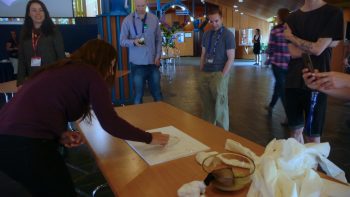 |
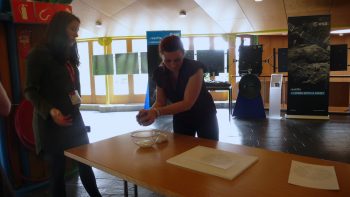 |
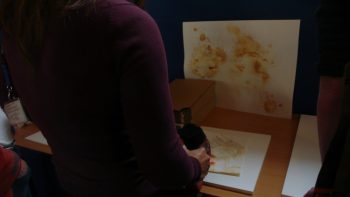 |
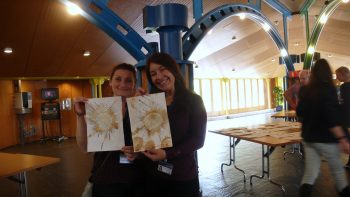 |
| Top row: Alice Resler and Imy Matthews making lemon juice impacts on Aoife’s limited-edition prints. Bottom row: Revealing the marks with the heat gun to complete the artworks. Credit: ESA, CC BY-SA 3.0 IGO. | |
|---|---|
Aoife is now back in her studio in London, UK, to finalise the design and script of Star Storm, before moving to the following part of the residency, which will take place at Ars Electronica’s Futurelab in preparation to the festival.
Follow this blog for more updates on the development of this project.

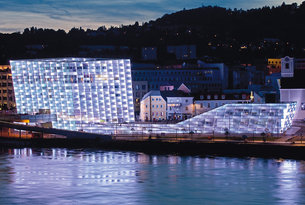

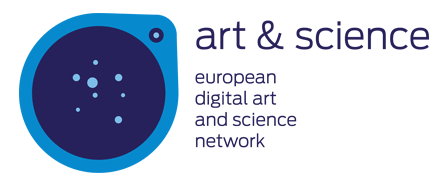
Discussion: no comments